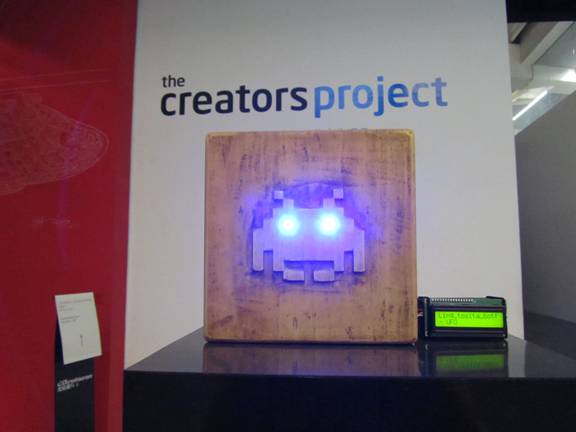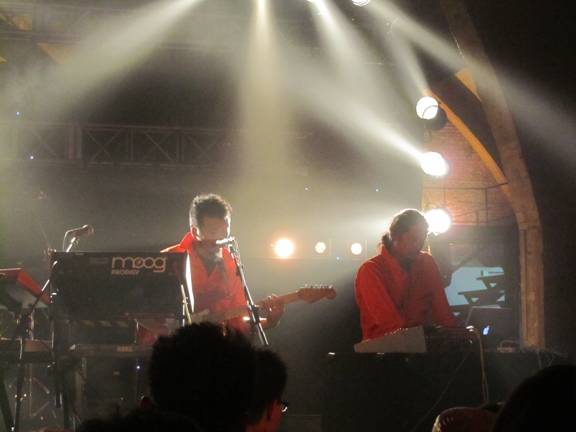Creative technology creates new modern culture
Updated: 2011-09-19 18:46
By Yvonne Brill (chinadaily.com.cn)
|
|||||||||||

Francis Lam’s ‘Space In-Rader’ installation at The Creators Project event held in Beijing. The device tracks real-time mentions of UFO sightings on the internet with the creature’s eyes lighting up at every mention.

The band Supermarket performs using a mixture of traditional musical instruments and audio technology during the live musical performance segment of the four-day Creators Project event in Beijing
Beijing’s creative set turned out this week to see the latest offering from global arts and technology initiative ‘The Creators Project’, in a cultural celebration that incorporated musical performances, contemporary art installations and film screenings by Chinese artists, as well as others from around the world.
‘The Creators Project’ is described by organizers as “an ongoing global arts and technology initiative” that was created to “support visionary artists, musicians, designers, and filmmakers who are using technology to push the bounds of creative expression,” and ran from September 15th-18th in Beijing’s 798 art district.
Launched in 2010, this is the second event of its kind to be held in China, and is one of many similar events held in major cities around the world including New York, Paris, Lyon, and Sao Paulo.
Foreign artists, musicians and filmmakers were included along with well-known and emerging Chinese participants at the Beijing event, something that attendees saw as a positive thing.
“I’ve been to the Creators Project in New York and there it was just American bands and UK bands… I think it’s good [the Creators Project: Beijing] have brought foreign bands and local bands – it’s a good thing,” said Alex Chow, a magazine art director. “It’s much more international. I think it’s a very good thing.”
The Beijing leg of the global tour included art installations created through the use of modern technology by influential Chinese game artist Feng Mengbo, Taipei-based artist Yao Chung-Han, and Shanghai graphic designer and multi-media artist Lou Nanli (also known as B6).
“The intervention of technology plays a key role in today’s artistic creativity. Technology not only redefined the meaning of tools, but it has also exceeded the limits and evolves into an art form itself”, Lou told Project organizers.
A popular feature of the four-day long event were live performances by bands and DJs such as Zhang Shouwang of Carsick Cars, Supermarket, Mount Kimbie and PK14, who have incorporated the use of technology into their music, a practice that is becoming increasingly popular, according to audience member Joe Choo.
“It’s very up, right now”, said Choo, the manager of a Chinese electro band. “Many musicians are putting different elements into their music style, experimental things like sync. The audience for it is getting bigger.”
The use of technology by artists, musicians and filmmakers to push the boundaries of ‘traditional’ art, music and film is a concept that was clear upon experiencing some of the different forms of art on offer.
From a contemporary art perspective, many of the installations used technology to enhance references to what is already considered popular culture.
This includes the life-size kung fu graphic effects from Feng Mengbo’s The BLVP (The Bruce Lee VJ Project) 2011, or the immersive audiovisual adventure that was Barney Clay and Mick Rock’s David Bowie inspired Life on Mars, Revisited, or Francis Lam’s Space In-Radar, an ambient tracking device that lights up upon receiving real-time notification from online reports of UFO sightings.
The movement way from ‘traditional’ music was evident during the live music performances, though some could be termed more experimental than others.
The musical offerings were described as indicative of ‘new Chinese culture, but more Beijing culture’ by audience member Sean Silbert.
“Beijing is the hearts heart of China, the creative capital,” said Silbert, a freelance writer based in Beijing. “You see things here that you wouldn’t see anywhere else. Anything super creative – art, music – you’ll see here”